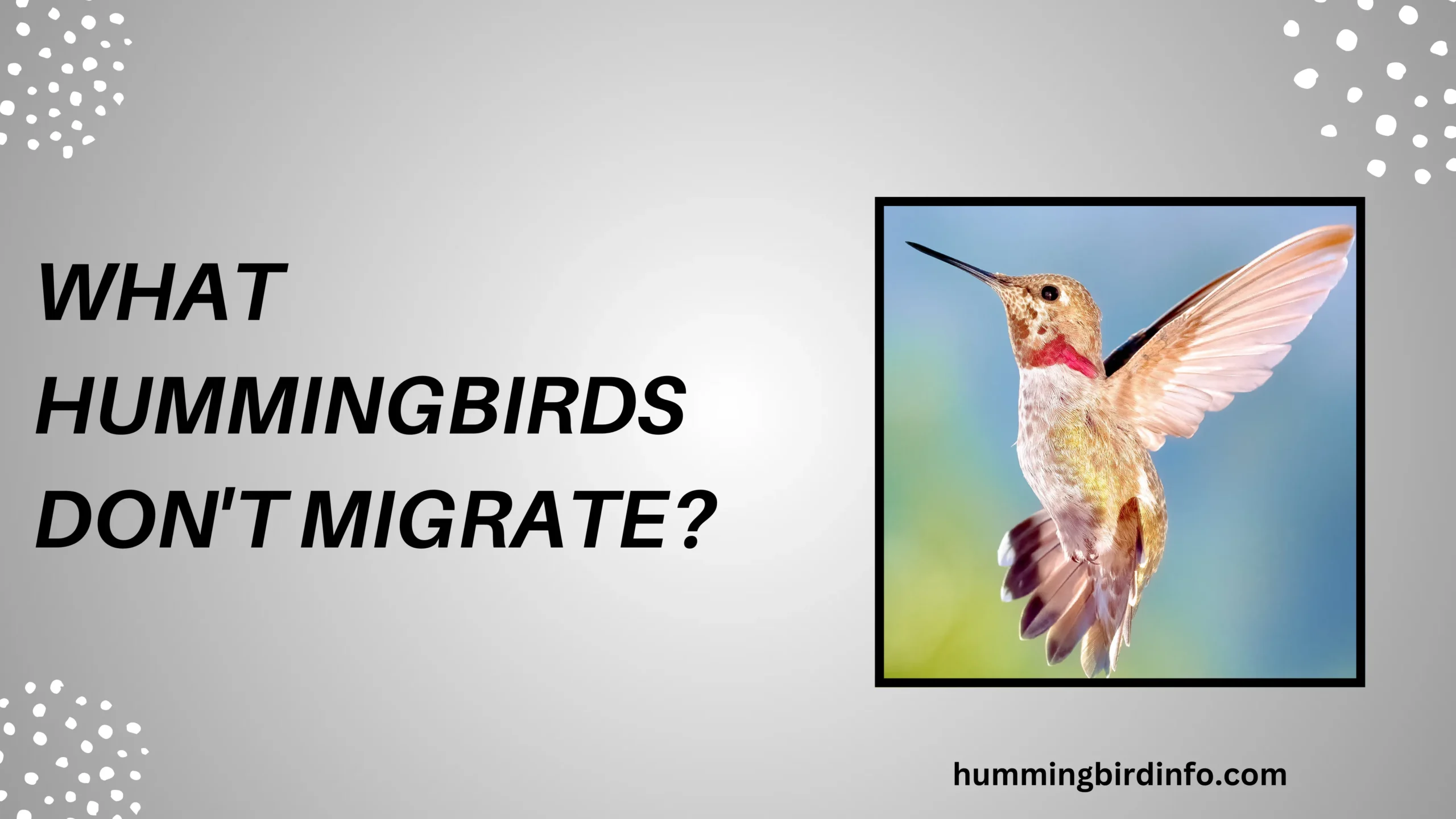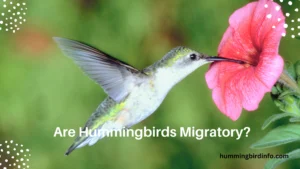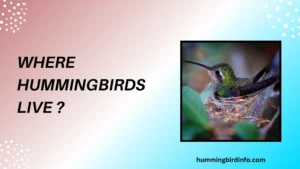Every year, we marvel at the incredible journeys of hummingbirds, traveling thousands of miles across vast landscapes in search of warmth and food. These tiny aviators are famous for their extraordinary migrations, a phenomenon that captures the imagination of bird lovers and scientists alike.
Yet, hidden within this familiar story is a surprising twist: some hummingbird species choose not to migrate at all.
These non-migratory hummingbirds defy the typical script, staying put year-round in specific regions. Their decision to remain challenges what many think they know about these birds and opens a window into unique adaptations and survival strategies.
Understanding why some hummingbirds stay provides us with a richer, more complete picture of their lives and the ecosystems they help sustain.
In this post, we’ll explore the fascinating world of resident hummingbirds, uncovering which species stay, why they do so, and what this means for their survival. From mild coastal climates to stable food supplies, these birds showcase remarkable resilience and adaptability.
Whether you’re a backyard bird watcher or an aspiring conservationist, learning about these stationary gems reveals just how diverse and complex hummingbird life really is.
Contents
- 1 The Champions of Staying Put: Key Non-Migratory Species
- 2 Factors Favoring Non-Migration
- 3 The Evolutionary Perspective
- 4 Implications for Backyard Bird Feeding and Conservation
- 5 Conclusion
- 6 FAQs
- 7 Q1: Why do some hummingbirds not migrate like others?
- 8 Q2: Which hummingbird species are known to be non-migratory?
- 9 Q3: How do non-migratory hummingbirds survive cold weather?
- 10 Q4: Does providing a hummingbird feeder help resident hummingbirds?
- 11 Q5: Are non-migratory hummingbirds important for pollination?
- 12 Q6: Can climate change affect non-migratory hummingbirds?
The Champions of Staying Put: Key Non-Migratory Species
Anna’s Hummingbird (Calypte anna): The Pacific Coast Resident
Anna’s Hummingbird stands out with its striking iridescent rose-red crown and throat in males, while females wear more muted greens and grays.
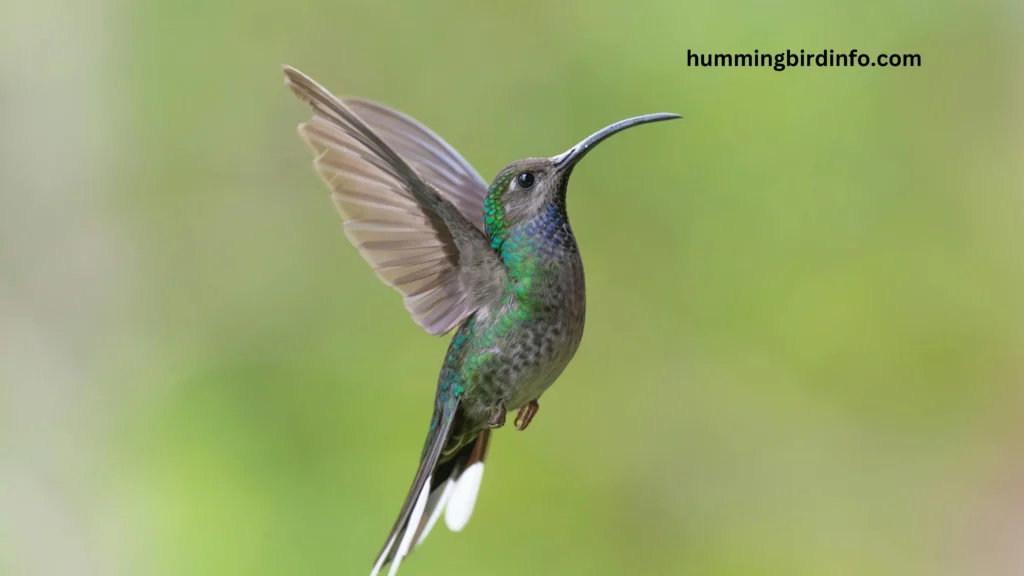
Unlike many hummingbirds, Anna’s can be found year-round along the Pacific Coast, from southern Canada through California and into Baja California. This bird’s expanding range inland to places like Arizona and Texas is a testament to its adaptability.
They avoid migration thanks to the mild coastal climate which rarely dips into severe cold. This, combined with a steady availability of nectar from native and non-native flowers—even in winter—means they have the food they need without traveling. Many also benefit from backyard feeders, which offer a vital energy boost during leaner months.
Anna’s also has physiological tools like torpor, a deep sleep-like state that conserves energy during cold nights. Their early breeding season, sometimes starting in late winter, gives them a head start on producing offspring before migratory species return. As year-round pollinators, they play an essential role in supporting local plant life.
Costa’s Hummingbird (Calypte costae): The Desert Survivor (Partial Migration)
The vibrant violet crown and flared gorget of the male Costa’s Hummingbird make it unmistakable in the southwestern deserts. These birds inhabit the arid regions of California, Arizona, Nevada, and parts of northwestern Mexico.
While many of these birds do not migrate far, some northern populations may move south during winter, reflecting a partial migration strategy.
Their ability to survive in harsh desert conditions relies on flexible movement patterns that follow the patchy blooming of desert plants, which depend heavily on unpredictable rains.
Costa’s Hummingbirds may breed multiple times in different locations based on flower availability. Their survival hinges on this opportunistic behavior, ensuring they always have access to nectar. As pollinators, they are vital to desert ecosystems, helping sustain plants uniquely adapted to dry climates.
Resident Populations in Warmer Southern Regions
Species like the Buff-bellied Hummingbird (Amazilia yucatanensis) thrive along the Gulf Coast and into Mexico, where warm temperatures and steady blooms allow them to remain year-round. Their bright green plumage and distinctive buff-colored bellies mark them as constant residents of these milder zones.
Other hummingbird species also maintain localized, resident populations in southern U.S. and Mexico’s warm areas, where food and weather remain stable. These birds don’t need to migrate because their environment continuously supports them with nectar and insects. This residency emphasizes how regional climate and flora shape hummingbird behavior.
Factors Favoring Non-Migration
Stable Food Availability
A consistent supply of nectar-producing flowers is the cornerstone of hummingbirds’ ability to stay put. Native plants with staggered bloom times and introduced ornamental flowers that bloom year-round offer reliable nourishment.
Human efforts, such as maintaining hummingbird feeders, also provide essential supplemental food, especially in winter or dry periods when flowers are scarce. This steady food supply reduces the need for energy-costly migrations.
Temperate Climates
Non-migratory hummingbirds are mostly found in regions with mild winters that don’t see extended freezing. This stability prevents the harsh food shortages typical of northern climates, making it easier for these birds to survive year-round.
In contrast, migratory species endure cold winters that force them to travel to warmer areas where resources are available.
Physiological Adaptations
Species that remain resident often use torpor, a state of greatly reduced metabolism that conserves energy during cold or food-scarce nights.
This ability is a key survival tool, allowing them to endure short-term environmental stresses without needing to migrate.
Reduced Competition
Staying put also means hummingbirds can establish and defend feeding territories year-round, facing less competition than during migratory seasons when multiple species overlap. This territorial advantage can support their survival and breeding success.
The Evolutionary Perspective
Remaining in one place can provide evolutionary advantages, like early access to breeding sites and avoiding the risks of long migration journeys. However, it also exposes birds to localized threats such as drought or habitat loss, which can be more devastating when they don’t move.
Hummingbirds that stay have adapted their ranges to include areas with stable climates and continuous food sources, enabling them to survive without migration. This strategy sometimes helps them expand into new regions, as seen with Anna’s Hummingbird’s northward movement.
Migration, on the other hand, evolved as a way to exploit seasonal abundance and avoid harsh conditions, showing that both strategies offer unique survival benefits depending on the environment.
Implications for Backyard Bird Feeding and Conservation
For those lucky enough to host resident hummingbirds, maintaining feeders year-round is crucial. These birds depend on clean, fresh nectar especially when natural blooms are not available.
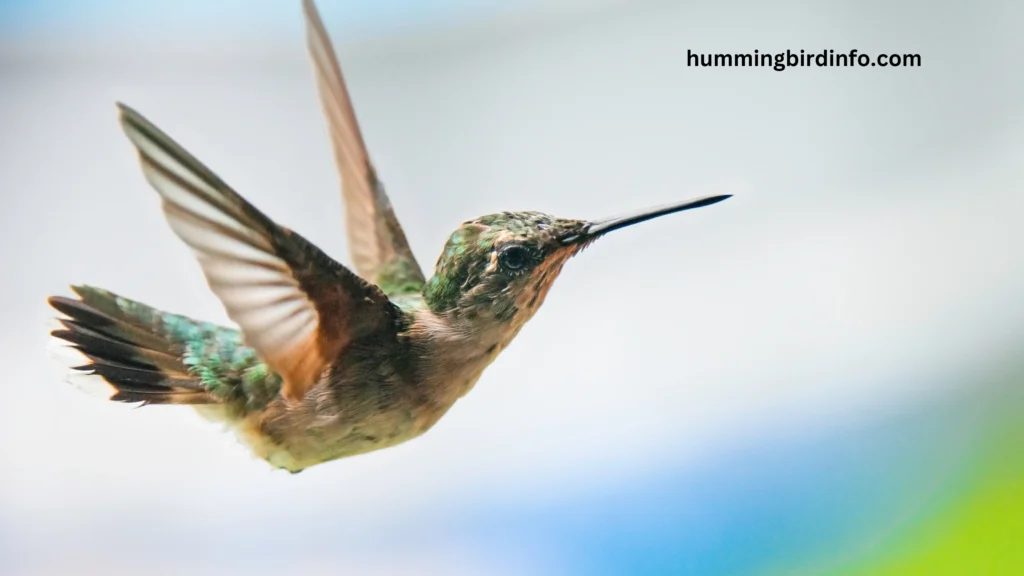
Planting a variety of flowering plants that bloom across seasons can provide natural food sources and support resident populations sustainably.
Conservation efforts must focus on preserving habitats in their limited ranges and addressing urban development or climate changes that threaten these hummingbirds’ homes.
Conclusion
In summary, species like Anna’s, Costa’s, and Buff-bellied hummingbirds have developed remarkable adaptations that allow them to remain in their territories throughout the year. These birds rely on a combination of stable food supplies, mild climates, and physiological strategies to survive without migrating.
Their existence challenges the common view of hummingbirds as solely migratory travelers and highlights the diverse ways nature shapes survival.
By understanding and supporting resident hummingbirds through careful gardening and feeder maintenance, we can help these tiny wonders thrive in our backyards. Their stories remind us that migration isn’t the only path to success—sometimes, staying put is just as powerful.
FAQs
Q1: Why do some hummingbirds not migrate like others?
Non-migratory hummingbirds live in regions with mild climates and stable food supplies, allowing them to stay year-round without needing to travel long distances.
Q2: Which hummingbird species are known to be non-migratory?
Key species include Anna’s Hummingbird, Costa’s Hummingbird (partial migration), and the Buff-bellied Hummingbird in warmer southern regions.
Q3: How do non-migratory hummingbirds survive cold weather?
They enter torpor, a state of reduced metabolism that conserves energy during cold nights or food shortages.
Q4: Does providing a hummingbird feeder help resident hummingbirds?
Yes, feeders offer a reliable nectar source, especially in winter or when natural flowers are scarce.
Q5: Are non-migratory hummingbirds important for pollination?
Absolutely, these hummingbirds serve as year-round pollinators, supporting local plant life and ecosystems.
Q6: Can climate change affect non-migratory hummingbirds?
Yes, changes in temperature and flowering patterns can disrupt their food sources and habitats.

